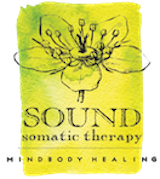5 Simple Activities to Help You Feel Better
(If you've landed on this page without doing the first two activities, you might want to go back to the beginning.)
#4 Go Inside
This order of events might seem backwards if you practice yoga or meditation or have done traditional talk therapy. These practices and processes tend to put a premium on our internal experience. A potential problem with this is that our internal experience might be uncomfortable, painful, even scary, so trying to go there right away may be overwhelming or just make us quit the whole thing. Indirectly, we began to touch in a little in Lessons 2 and 3; now we’ll go a little further.
Many researchers distinguish between self-esteem and self-acceptance. Self-esteem is based on a positive evaluation of ourselves coming from our attributes, accomplishments, abilities, social comparison and success. Self-acceptance, on the other hand, is what it sounds like—acknowledging the reality of who we are, including both the parts we consider desirable and undesirable, both the experiences that are pleasant and those that are unpleasant. Self-esteem is conditional (I feel okay about myself in certain circumstances or if certain things are true); self-acceptance is unconditional (I feel okay about myself no matter what).
Many people get confused by the word “acceptance,” thinking that it signifies agreeing with something. As we are using it here, it really means acknowledgment. Acceptance is saying, “Yes, this is true or real” not “Yes, I approve of this” or “Yes, this is good.” We can also think of self-acceptance as letting go of the agenda to change the self. So what researchers have found is that self-acceptance, not self-esteem, is related to, among other things, greater resiliency and a better ability to handle threatening situations. Self-compassion is another term used by researchers, which includes self-acceptance. Self-compassion is related to lower anxiety and depression and people who have more self-compassion are happier and more optimistic. (For more info, Kristin Neff is one of the big self-compassion researchers)
So self-acceptance does sound like something that could make you feel better, but the title of this e-course says it's going to be simple and that you can do it right now. That’s where the going inside comes in. As I said a few paragraphs ago, for many of us, if we even dare to check in with what is happening in our internal experience, it is unpleasant or scary. In fact, in any given moment, there are most likely some sensations that are unpleasant, some that are neutral and some that are pleasant. In this lesson, you are going to start building your ability to accept yourself by accepting what you notice happening in your body.
Now, I am going to be honest with you. This is a bit of a jump from the first three lessons. For some people, this is not going to be easy. But you have a good foundation and I think you can do it.
Start by orienting to your environment—notice three things outside. Now, go inside and notice three things. You are just noticing, not lingering anywhere. And to start, you can include the kinds of things you noticed in Lesson 2 when you felt yourself in the chair if that helps. After your three inside observations, you will go back outside and notice three things out there again.
So it might go something like this:
(outside) I see letters on the computer screen. I see a wooden chair. I see dirt on the window. (to inside) I feel a pinchy feeling in my right shoulder. I feel my glasses sitting on my nose. I feel my back against the couch. (to outside) I hear water running. I see a yellow pillow. I see the blue sky.
You are just observing things without trying to change them, understand them, explain them or evaluate them. You can go back and forth as many times as you like. Many people don’t have a very extensive vocabulary for physical sensations. You can always just say, “I feel something in my knee.” If you want to get some ideas for new words, here is a site with a starter list.
If, when you go inside, you mostly notice things you don’t like, that’s okay because you are not going to stay there. It’s like you’re just taking a peek: “Yep, that’s there, that’s there and that’s there” and then you go back outside. You’re not going to get stuck or lost. Out and in and out, and in and out. In fact, if you tend toward overwhelm or stuckness, the practice of keeping the attention moving can be very helpful in and of itself.
Other resources on self-acceptance, if you are interested, include any book by Cheri Huber, especially There is Nothing Wrong with You and Radical Acceptance by Tara Brach
I have made some short recordings of guided exercises, including this one (#4). Click here to listen.
If any of these exercises are frustrating or triggering, you can contact me for support.

